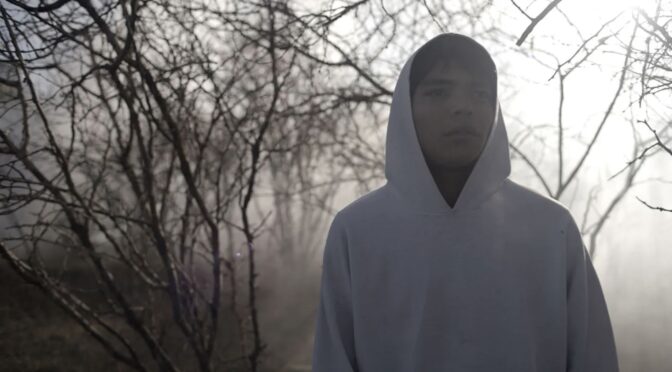 Reconciling your past with your present and desired future is an existentially confusing thing to ruminate upon. Layering in the deeds – or misdeeds – of your father and the influence of significant figures in your life can only make the feelings more complicated, and it is this complexity that SUJO captures. A picturesque chronicle of a young man’s life and the long shadow cast from whence he came, it represents another assured piece of work from the creators of IDENTIFYING FEATURES (the debut feature of Fernanda Valadez, and a film with which SUJO shares key creative team members – principally the previous feature’s producer, Astrid Rondero, who now also co-directs).
Reconciling your past with your present and desired future is an existentially confusing thing to ruminate upon. Layering in the deeds – or misdeeds – of your father and the influence of significant figures in your life can only make the feelings more complicated, and it is this complexity that SUJO captures. A picturesque chronicle of a young man’s life and the long shadow cast from whence he came, it represents another assured piece of work from the creators of IDENTIFYING FEATURES (the debut feature of Fernanda Valadez, and a film with which SUJO shares key creative team members – principally the previous feature’s producer, Astrid Rondero, who now also co-directs).
The film opens on a horse bolting from a raucous gathering, captivating the attention of a young boy, Josue. A time jump takes us to Josue’s cartel activities with his young son, Sujo, in tow. Castigated by the boy’s aunt, Nemesia (Yadira Pérez), for leaving him in a locked car for hours, Josue’s days as a sicario are cut short by the very cartel he works for. A memorable moment, where Rondero and Valadez build tension superbly, sees him cowering under his aunt’s table as the cartel looks to sweep up loose ends. It appears as if the boy has the naive obliviousness of childhood (as he did in the car) until a pool of his urine seeps into the shot. From here, the film proceeds through several chapters centred on the main influences in Sujo’s life, charting whether he will find his own path or be dragged back to his father’s.
“Despite a different cinematographer, Ximena Amann, for this second feature, SUJO shows the same stunning shotmaking as IDENTIFYING FEATURES.”
Despite a different cinematographer, Ximena Amann, for this second feature, SUJO shows the same stunning shotmaking as IDENTIFYING FEATURES. There is a dustier, earthier tone to SUJO’s images (being set mostly in the desert), but the filmmakers still take the opportunity to play with light and its symbolic part in depicting the characters’ moods and roles. At one stage, Sujo and his aunt stand in a dimly lit room, the shards of light breaking strongly through the sealed door and shutters, seemingly as inescapable as the cartel gang which roams outside them.
The film also neatly conveys the passage of time when the chapter structure would have been a convenient crutch. The car in which Sujo’s father left him in the film’s opening stretch recurs a few times. The vehicle first recurs as a place Sujo sleeps when still very young, perhaps in a heartbreaking attempt to reconnect to his late father. Seeing the car caked in dirt and debris many years later is a concise and adept shorthand for how much time has passed but how little has changed.
“… completes the sense of visually intruding on memory rather than observing objective events. Backed up by more tangible elements […], the picture is just as dramatically involving as it is visually.”
Although SUJO treads plot points covered extensively in cinema, it approaches things with the feel of something akin to a lucid dream. Violence is rarely depicted explicitly, with Josue’s early demise neatly encapsulated by Nemesia catching a glimpse of his distinctive belt buckle in a burn barrel. Sujo’s cartel-beholden cousin disappears from a hyper-shallow depth of field after a visit to Sujo, and a late seamless transition from a corridor to a misty field completes the sense of visually intruding on memory rather than observing objective events. Backed up by more tangible elements such as the performances of Juan Jesús Varela (another standout graduate of IDENTIFYING FEATURES) and, especially, Yadira Pérez, the picture is just as dramatically involving as it is visually.
The ephemeral feel seems appropriate for a film which continually asks whether someone can change their life and tries to illustrate the myriad and unknowable ways our past, present, and aspirations impact what we make of our situation. Much is made throughout the film of where Sujo’s name comes from. The film eventually resolves this conundrum in a reasonably rote way, but one which delivers on the idea that we cannot boil our lives down to good or bad influences as neatly as we sometimes think.

